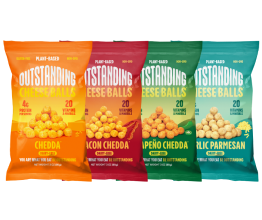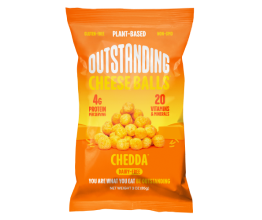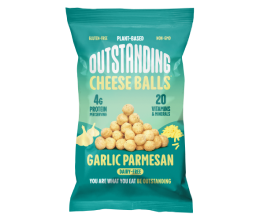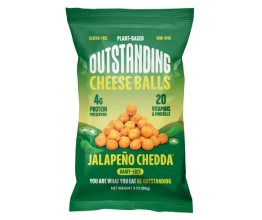Is Whey Gluten-Free? What You Need To Know
From the hardcore bodybuilding crowd to the busy moms who need nutrition on the go, whey protein powder is an all-time favorite in the world of health and fitness. It’s affordable, effective, easy to use, and can be applied in a huge range of recipes. Plus, it’s tasty.
But for so many fitness enthusiasts out there, there’s a question that often gets glossed over – is whey protein powder a gluten-free food? As you might expect, there’s not a yes-or-no answer.
It’s time we did a bit of investigation into the world of whey protein and figure out firsthand whether the gluten-free crowd can safely enjoy this stellar supplement. We’ll talk about the basics of whey, how to tell if your product is gluten-free, and give you an overview of some other concerns you’ll want to keep in mind on your journey. Let’s get to it.
What Is Whey Protein Exactly?
You’ve seen the big 5-pound jugs in the supplement shops and the boutique pouches in the grocery store. You may even see tiny individual servings samples handed out at events or gyms. Whey protein is everywhere, but what the heck is it, anyway?
For a refresher, protein is one of the “big three” macronutrients that make up the majority of our nutrition, alongside carbohydrates and fat. It’s responsible for repairing our muscles after we put them through the wear and tear of a workout or just going about daily life.
Protein is also key for cellular activity and helps boost important functions in the body such as metabolism and immunity. We can’t live without it! That’s why doctors recommend we get around 0.8 grams of protein per pound of bodyweight every day, especially when we’re active.
However, if you do some quick math, you’ll find that protein requirement to be rather high – much more than the standard American diet provides. Most of our foods are carb-heavy, and protein-packed foods are not so readily accessible for quick and easy snacks.
Enter whey protein powder, a convenient product that packs over 20g of protein in a single serving and only takes a couple of minutes to prepare. It's most commonly found in powder form, and shakes or treats made with whey protein can help increase and maintain muscle mass while keeping fat mass low.
Whey is a naturally occurring compound found in cow’s milk, and over 80 percent of the protein from milk is pure whey (casein representing the other 20%). Whey separates from the rest of the milk during the making of dairy products like cheese, curds, and yogurt, then processed down to a powder. Flavors like chocolate, vanilla, and strawberry are added to whey concentrate make it more palatable.
In addition to the convenience factor and tasty flavors, whey protein concentrates are some of the highest quality nutrition available, containing many of the essential amino acids needed for healthy skin, hormones, and neurotransmitters.
Gluten-Free or Not?
Whey protein definitely has some clear advantages, but if you're following a gluten-free diet or have a gluten sensitivity, you’ll want to know if it’s truly safe to eat.
Let’s start with the good news: most of the top-tier pure whey protein products are indeed certified gluten-free, meaning you can safely enjoy your shakes without worry.
However, you might run into problems with some of the cheaper whey powders on the market, so there are a few things to look for prior to making a purchase.
When examining a whey protein product online or in-person, make it your mission to find the official gluten-free label on the jug or packet. There are laws in the United States to ensure that a product contains fewer than 20 parts per million of gluten to earn the seal of approval from the FDA. If you’re a longtime gluten-free dieter, you’ll know the “GF” symbol when you see it.
Those with very serious gluten intolerance or celiac disease will want to be even more careful when selecting whey and look for a mark from the Gluten-Free Certification Organization (GFCO). This ensures the product contains a maximum of 10 parts per million of gluten, twice as strict as the common legal standard.
It’s worth contacting the manufacturer if you’re concerned about issues like cross-contamination that may occur during the whey production process. Find a producer that takes gluten-free seriously and stick with them, so you don’t take further risks.
Scanning the Nutrition Panel
Just like any health supplement out there, you’ll find a lot of variation in the quality of whey protein between manufacturers. It’s important to know what you’re buying and consuming to maximize your health and avoid any issues.
Aside from checking for the gluten-free certifications on the front of the product, it’s not a bad idea to scan the ingredients list to see exactly what’s going on. Wheat flour or wheat protein is an obvious red flag, but also be on the lookout for grains like malt, brewer’s yeast, oats, barley, rye, and graham flour. Sometimes these components, like oat flour, are added for fiber, but they result in the protein blend no longer being a gluten-free whey protein.
You should also know which artificial flavors, peptides, and food coloring might contain trace amounts of gluten, and avoid these things in general if you want to keep a truly clean diet. For instance, the chocolate and banana version of one protein brand may be gluten-free, while the cookies and cream is not. On the other hand, despite its name, the ingredient glutamine is completely gluten-free, as it is an amino acid and not a wheat protein.
The key lesson is to take nothing for granted and take the time to do a bit of extra research. Guidelines and regulations are a bit looser when it comes to the health supplement industry, so proceed with more caution than usual. You may even want to check whether the whey protein powder was manufactured in a facility that also creates products that contain gluten, as there is a risk of contamination that may be concerning to people with a severe gluten allergy.
Even if you aren’t necessarily concerned about gluten levels, we all want to keep away those unwanted compounds and additives. As a rule of thumb, the fewer ingredients on the label, the better.
Of course, the big drawback of many whey products is sugar. Don’t be fooled by the front of the jar with fitness models and catchphrases. If your whey protein has added sugar, you aren’t doing yourself any favors to get in better shape! Make sure your next pickup is 100% sugar-free, and you’ll thank yourself later.
Alternatives to Consider
Despite all its benefits and gluten-free status, whey protein is still derived from milk, meaning it’s not suitable for people who follow complete plant-based diets. Some folks also have an intolerance to lactose or keep a lactose-free diet, which means whey protein supplements are off the menu for them, too.
Luckily, there is more than one whey protein powder substitute that delivers a similar burst of nutrition, still tastes great, and comes from plants rather than milk.
Pea protein is considered the most popular vegetable-based protein on the market right now, offering an impressive amount of branch-chain amino acids in each serving. It’s easy to digest and makes a great addition to green smoothies.
Hemp protein is another great gluten-free protein powder and can be found at affordable prices. Brown rice protein is even cheaper and becoming more popular. You’ll also find many soy protein products on the market, although there are mixed reviews and some concerns about soy to consider.
We suggest picking up a few different plant-based protein products at once and trying them all to see which ones work best with your palate and digestive system. Remember to scan the label for gluten-free certification if that’s a priority, and avoid additives if you can.
Expand Your Protein Palate
Whey protein is a blessing for gluten-free folks to hit their daily value of protein and accelerate fitness goals, but you may not always be in the mood for a sweet shake. Besides, those shaker bottles can be tedious to clean and smell really bad if you let them sit for too long, not to mention that the shakes themselves actually take some time to make.
Sometimes you want a savory, crunchy snack on the go, but most chips and crackers don’t offer anything in the way of protein – plus, they’re not gluten-free.
At Outstanding Foods, we took all these factors into account and created magnificent protein-packed snacks that outperform the nutrition of whey protein without any of the drawbacks. You’re welcome!
Our Pig Out Pigless Pork Rinds are the flagship product, mimicking the powerful crunch of real pork rinds without the excess sodium and fat. You get a whopping 25g of plant-based protein per bag – no gluten, soy, or dairy to be found.
For another helping of flavor and nutrition, check out our Outstanding Puffs. They taste just like the cheese puffs you love but deliver big on protein and essentials vitamins like B12, D, and E. Once again, they’re perfectly vegan and gluten-free.
Conclusion
Whey protein is a powerful supplement, but there’s always more to learn! Keep these tips in mind to get strong and maintain great overall health and wellness.
Sources:
https://www.healthline.com/nutrition/whey-protein-101
https://www.beyondceliac.org/gluten-free-diet/is-it-gluten-free/whey/








